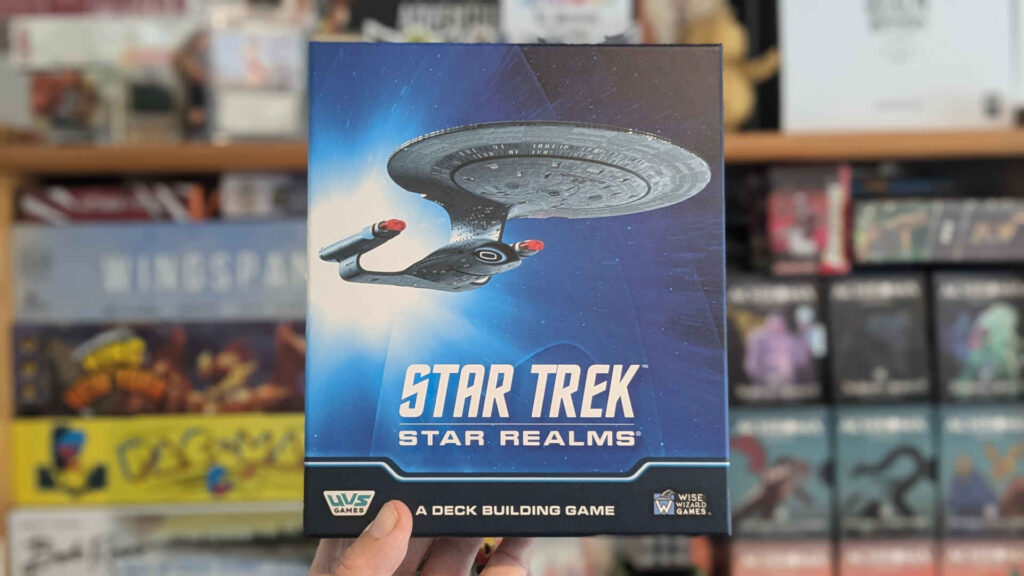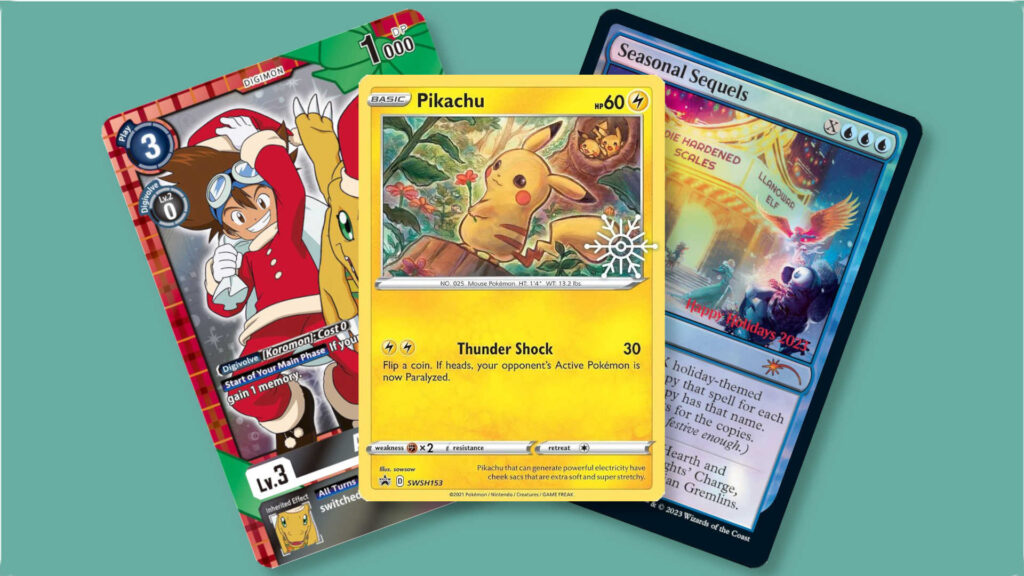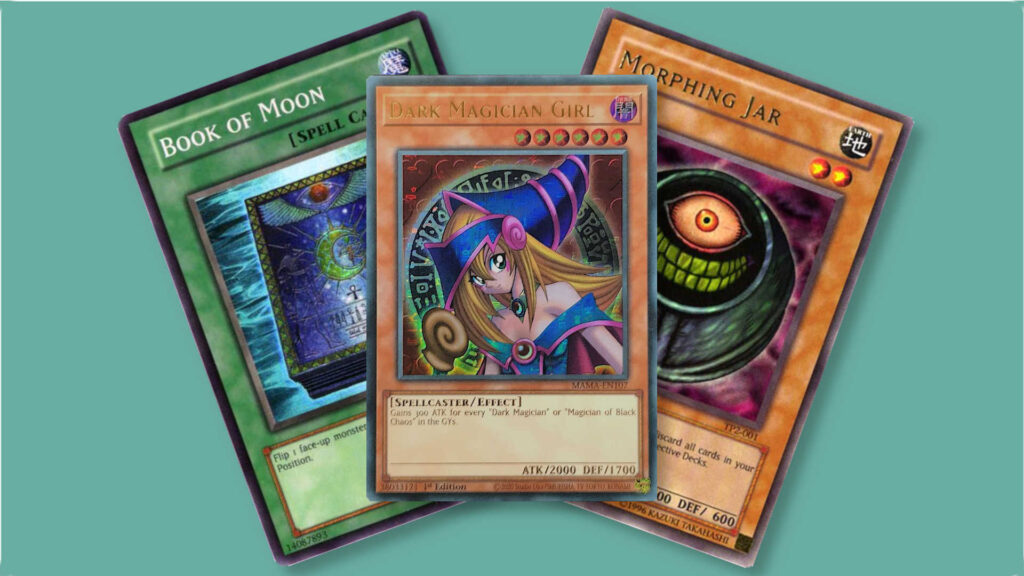Though it’s the perfect way to get your Trekkie friends and family members involved with one of the very best card games on the market, Star Trek: Star Realms falls a little short with its blurry, sometimes murky images and overly dark aesthetic. Trek fans may balk at the thematic inconsistencies involved in building a deck from the game’s factions, and the included playmat is disappointingly flimsy too. Still, at its heart, this is still Star Realms, and it’s a game that holds up to the retheming, and given that modes of play that can accommodate up to six players are included in the box, this Star Trek adaptation still represents pretty decent value for money. If you don’t already have Star Realms in your collection, this isn’t a bad introduction to the countless hours of enjoyment it provides.
Robert Dougherty and Darwin Kastle’s Star Realms was launched in 2014, and is rightly regarded as a contemporary classic. Deceptively simple on the surface, it’s a game that’s easy to learn, but underneath that straightforward, no nonsense game design lies a brilliantly addictive game, which players never seem to tire of, no matter how much they play. The base game has been expanded numerous times, with several highly regarded expansions adding further options and possibilities to Star Realms, with co-operative and solo play modes, as well as more than just 1v1 play, enabled when expansions are utilised.
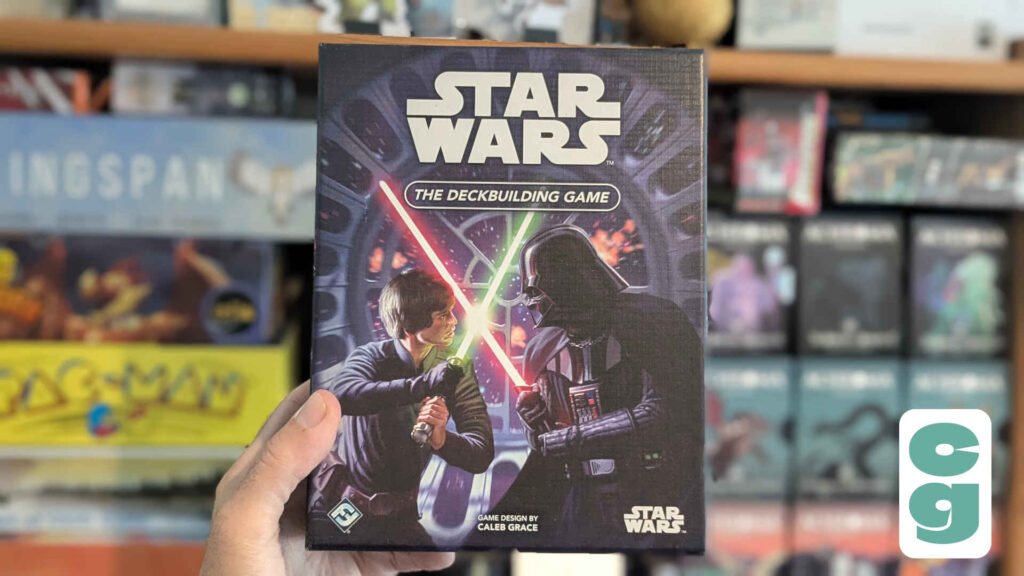
It’s proven influential, too; the Star Wars Deckbuilding Game, which is a superb game in its own right, owes a lot of its design framework to the brilliance of Star Realms. Cthulhu Realms took the basic elements of the game and brought a unique feel of cosmic horror and insanity to players. Hero Realms adapted the sci-fi deckbuilding game as a fantasy title, with orcs and demons facing off against humans and elves.
Yet, unless you count Cthulhu Realms, which isn’t a straight adaptation of Star Realms, there’s never been a proper, licensed version of Star Realms. Or at least, there hadn’t been, until now.
UVS Games, armed with the Star Trek license (which they’re also using to bring Star Trek: Lower Decks to their long running trading card game, UniVersus) have collaborated with the original publisher of Star Realms, Wise Wizard Games, to bring Gene Roddenberry’s universe to players as a more or less straight reskin, to use a video game term, of the original Star Realms game.
Star Trek: Star Realms is, more or less, based in Star Trek: The Next Generation’s era (which means that other shows, such as Deep Space 9, set in the same time period, are also used as source material for the majority of the cards), and as such, each card features a ship or location that’ll definitely be familiar to long term Star Trek fans.
Table of Contents
ToggleWhat’s In The Star Trek: Star Realms Box?
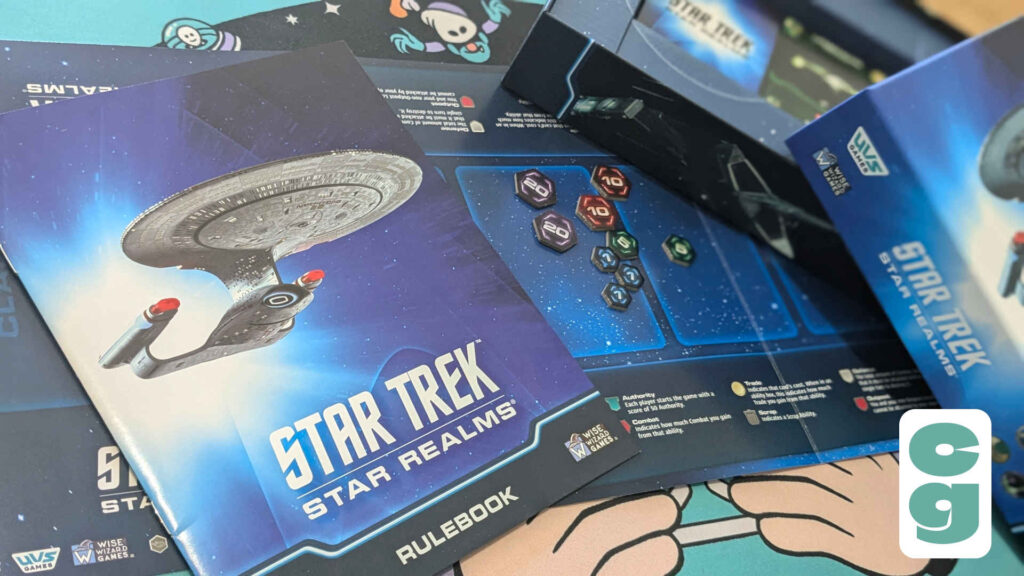
In this version of Star Realms, you get 130 cards, double-sided cardboard counters to track Authority, a light cardstock play mat and the rules. The play mat, though it’s not particularly sturdy, is a very welcome addition; this isn’t included in some of the basic versions of Star Realms, and it provides a game layout for each player, as well as handy turn phase reminder and reference guide for the game’s numerous icons.
How Do You Play Star Trek: Star Realms?
Despite being a decade old, you may not be familiar with Star Realms; it could be that this Star Trek version of the game is your introduction to it. If that’s the case, fear not; it’s incredibly easy to play, even though its numerous icons and the cards may look a little daunting at first.
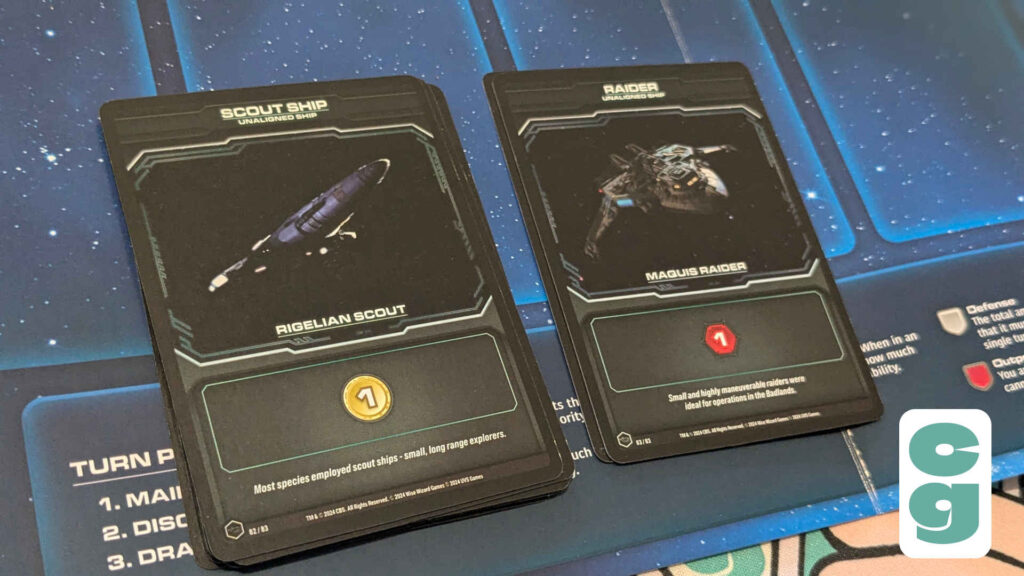
In Star Realms, each player will have their own deck of 10 cards to start the game with (these are comprised of the cards shown in the above image: 8 Scouts and 2 Raider cards). These are shuffled, and each player draws a starting hand. Each player also starts with 50 Authority points, which essentially represent political power in the game; to win, you’ll need to reduce your opponent’s Authority to zero.
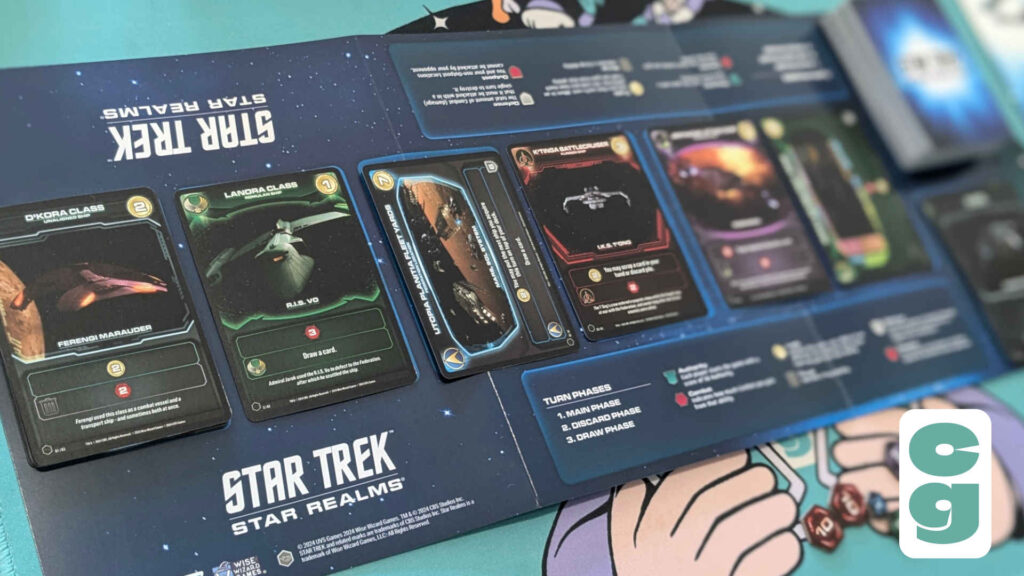
A central row of face up cards is dealt (from the shared Trade Deck) between the two players, which represents the Trade Row; these are cards which players can purchase each turn. When a player buys a card from this row, it goes face up onto their discard pile; when a player’s deck runs out of cards, they shuffle all of their discards together to create a new draw pile.
There are three phases to each turn: the Main Phase, the Discard Phase and the Draw Phase. During a player’s Main Phase, they’ll play the cards from their hand, and as cards don’t stay in a player’s hand (they’re discarded in the Discard Phase), generally, players will play all of the cards from their hand, in any order they choose.
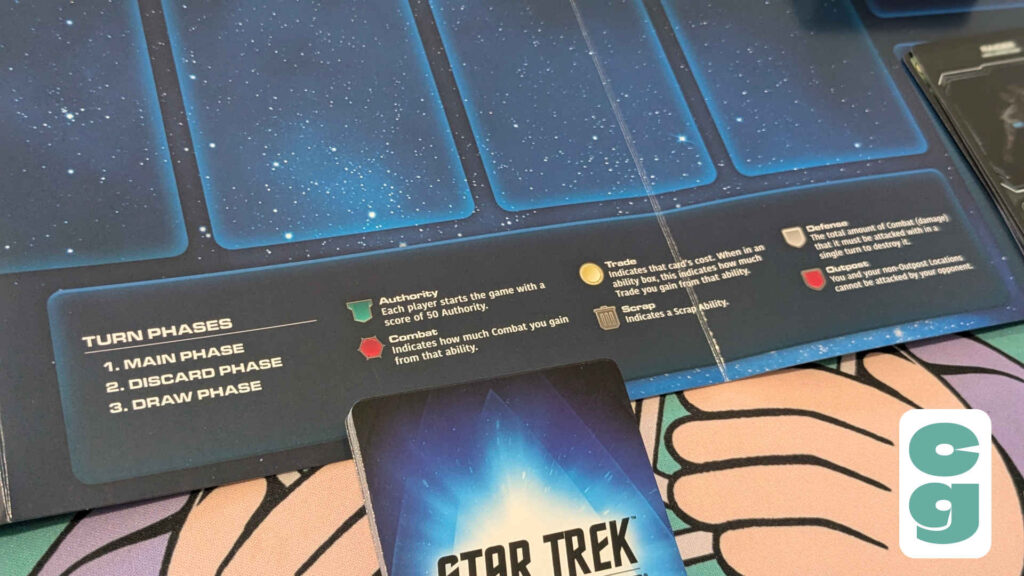
Card abilities can be triggered, Trade generated by cards can be used to buy new cards from the Trade Row, and players can also attack other players, using Combat values which are also generated by the cards they play.
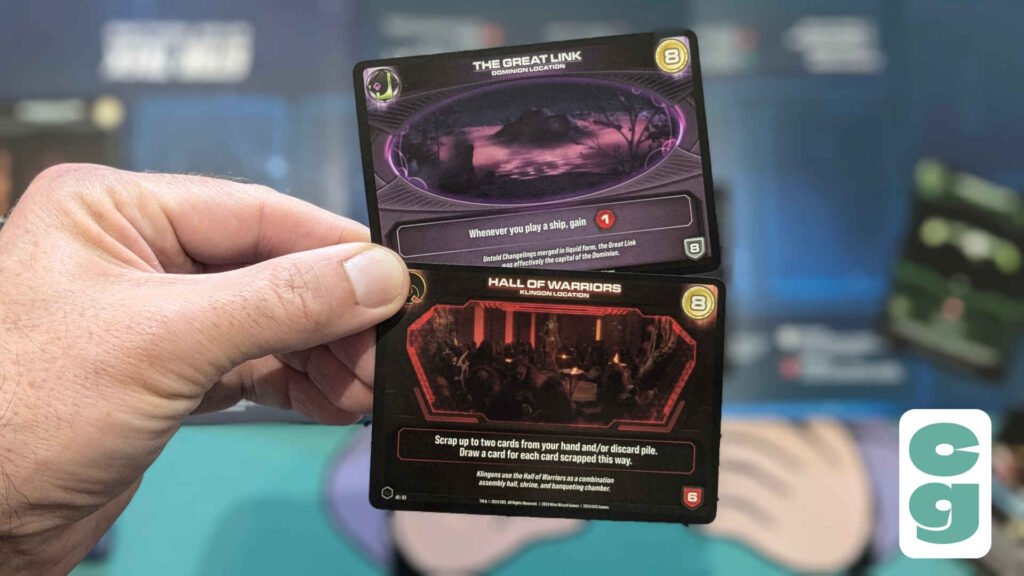
Most cards are ships (see below), which provide Trade, Combat or Authority; however, Location cards can also be played, and these tend to be more powerful than ships. If a Location has a red shield icon, it’s an Outpost, and these block the opponent from attacking a player directly; instead, a Location must be destroyed outright, with its Defense value reduced to zero in one single turn, before a player’s Authority can be attacked again. In the image above, The Great Link card is an example of a Location, whereas the Hall of Warriors is an Outpost Location card.
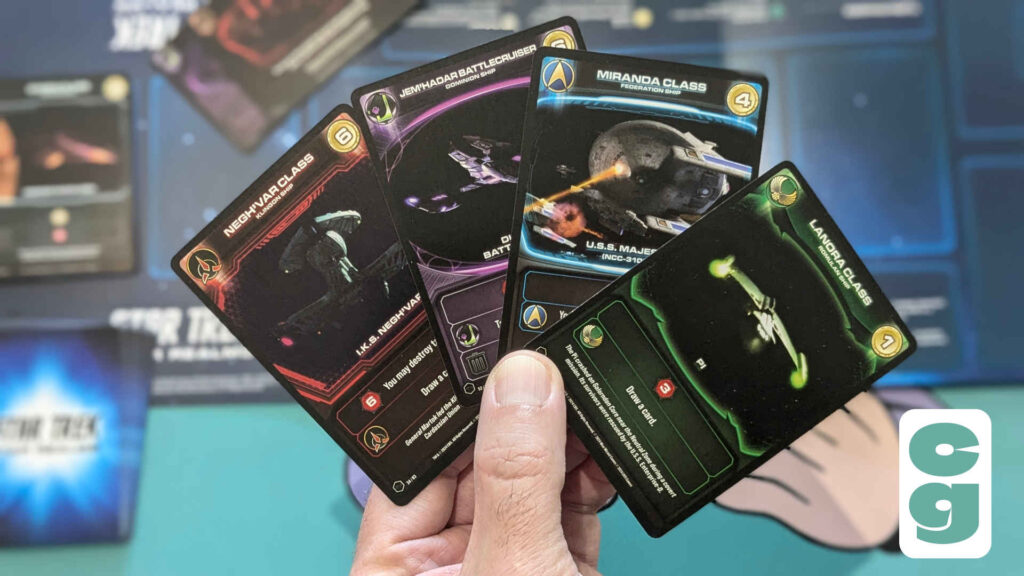
Ships from the same faction, with Federation, Klingon, Romulan and Dominion cards included (along with Unaligned cards), will often provide bonuses to the player, so it’s worth paying attention to what bonuses a ship can offer, as well as its basic, non-Faction based icons.
Though of course there are a few wrinkles and extra rules to be aware of, those are the basics of Star Trek: Star Realms, which is very easy to pick up and play.
How Many Players Can Play Star Trek: Star Realms?
The rules are mostly designed around 1v1 play, but they also include brief descriptions of how to adapt Star Trek: Star Realms for up to six players, in multiple ways. These only require minor changes to the basic rules, so as long as players have a basic familiarity with Star Realms, it’s not difficult to bring more players into the action. Though solo and co-op variants (aside from teams taking each other on) included here, we’re holding out hope that these can be the subject of an expansion; it’d be great to team up against the game itself, or take the helm of a fleet of Federation ships alone!
Is Star Trek: Star Realms Fun To Play?
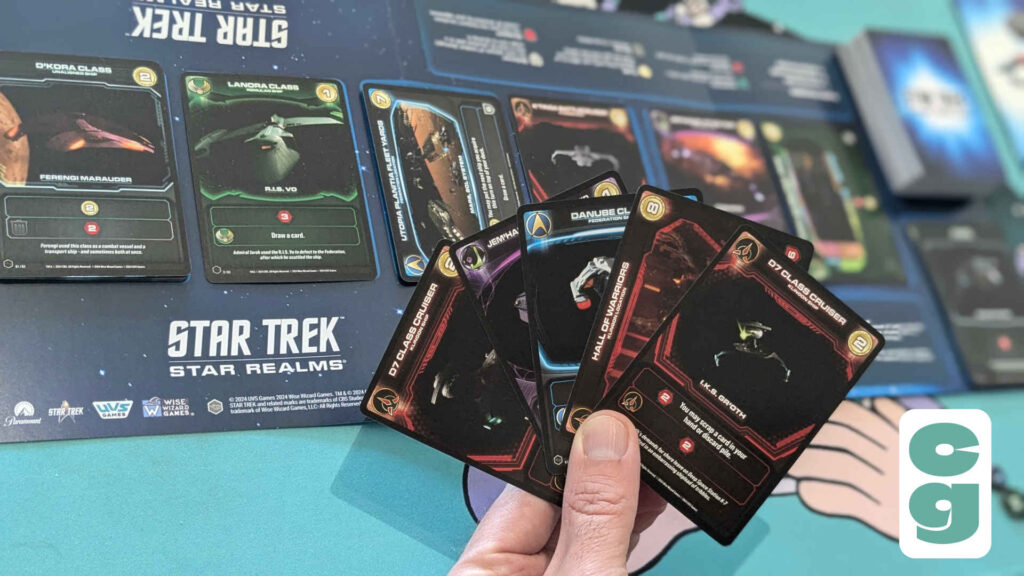
Given that each turn will see players generally play all cards in their hand, purchase a ship or two from the Trade Row and then attack their opponent, the flow of the game quickly becomes second nature, and Star Trek: Star Realms, just like the original game which has spawned it, plays quickly and smoothly.
It soon becomes very compelling; it really doesn’t take long for the game’s mechanics to click, and there’s a hugely addictive set of mechanics here, with the purchasing of cards and the gradual building up of a player’s deck being genuinely satisfying as it grows. Devastating combos of Attack, or high Trade values, are thrilling to put into play as you get to the more powerful cards you’ve purchased, and it’s fantastic to see plans coming together in this way.
Are The Cards And Components Well Made?
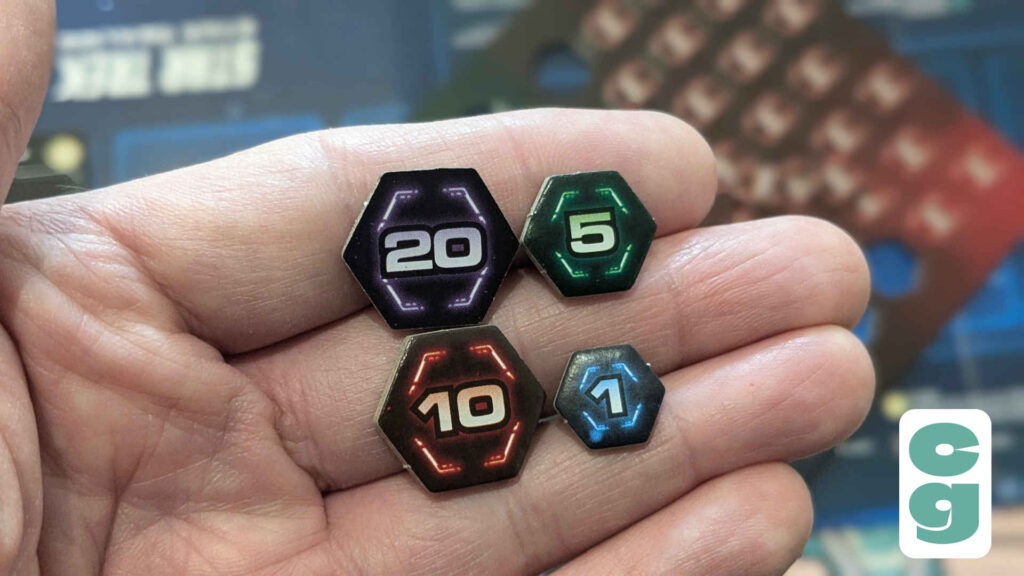
The Authority counters are made of reasonably thick card, but, as mentioned, the play mat is extremely thin and isn’t likely to stand up to constant use. Given that the base game of Star Realms doesn’t include a play mat, however, arguably this is a bonus that isn’t necessarily essential for play. Once players have a few rounds of the game under their belt, it’s definitely not something that’d be missed if it wasn’t used.
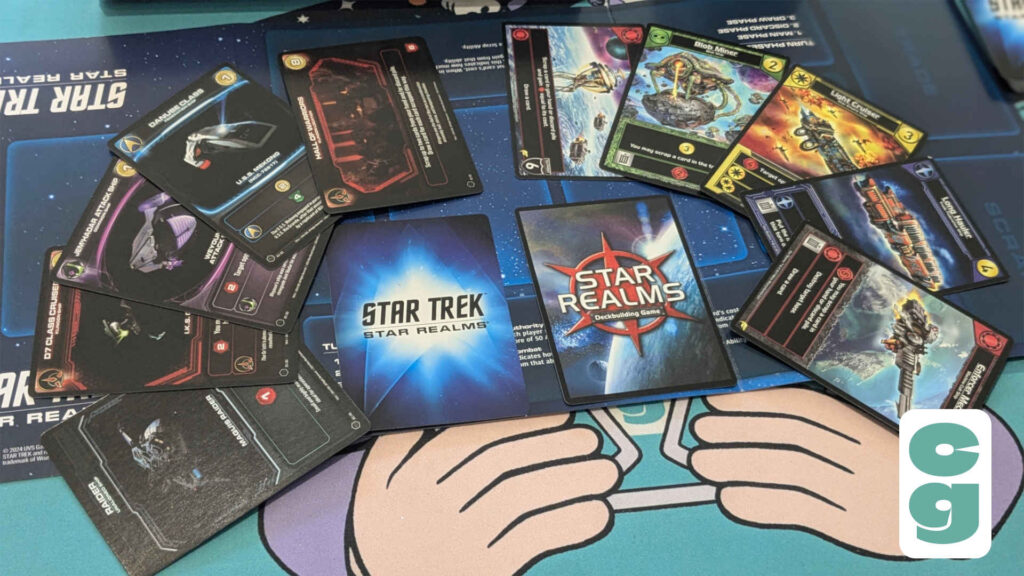
Unfortunately, there’s a bit of an elephant in the room when it comes to the overall visual design choices in Star Trek: Star Realms. The cards are much darker and less colourful than those found in the original Star Realms, which has a much brighter and more boldly colourful look than this Star Trek version; you can see what a difference there is between the two versions of the game in the above image.
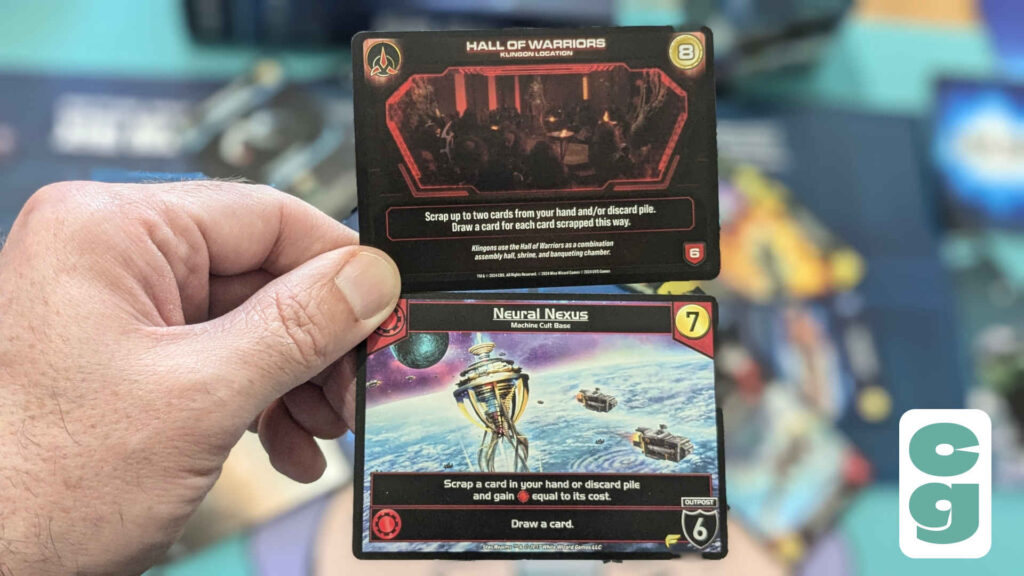
The use of TV and movie stills as card images results in the majority of cards looking extremely blurry and somewhat murky too. Card iconography and layout is, however, pretty clear, and the use of flavor text, to give players the lore behind each card, is a nice touch; check out the comparison of location cards from both the Star Trek and original versions of Star Realms above.
The box insert features a great, top down, blueprint-esque image of the Enterprise-D (from Star Trek: The Next Generation); though the space to hold the cards is too snug to hold the included cards if they’re sleeved, overall the box is a decent size without being too big. It’s a shame that there’s no bag to hold the tokens in, but this is a bit of a nitpick; the box has space to hold the cards and tokens nicely, and its size means the rulebook and play mat are of a reasonable size, making them functional, practical and well laid out too.
The Card Gamer Verdict
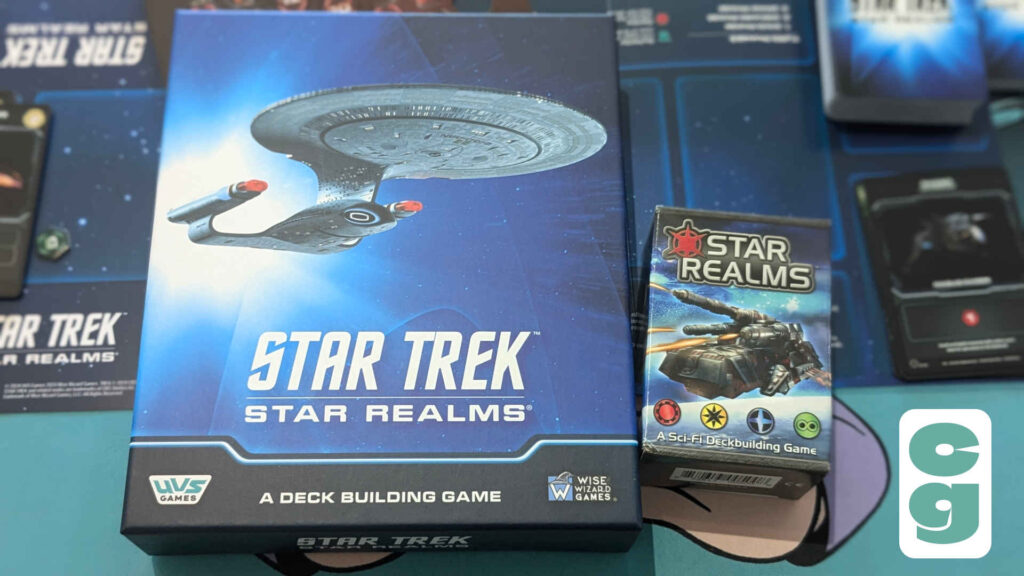
If you haven’t played Star Realms before, this Star Trek version is a reasonable introduction, and does make the game easy to learn, with clear rules and a play mat which proves to be an invaluable rules aid for new players. If you’re a Star Trek fan, there’s undoubtedly no better place to boldly go, and begin your journey of exploring strange new Star Realms.
Despite a disappointingly dark overall look, and a theme that doesn’t always make sense when you’re building a deck that has Federation, Klingon, Romulan and Dominion ships working together, it’s still Star Realms at its core. The fact that the game’s design holds up so well against the sometimes disappointing aesthetic of this version is a testament to what a masterpiece Star Realms is, and here at Card Gamer, we don’t use that term lightly.
If you already have Star Realms or any of its expansions, standalone or otherwise, in your collection, there’s little need to pick up Star Trek: Star Realms, as it’s essentially a reskin of the standard game. However, with rules for up to six players to play together, (either in teams or all vs all) included, there’s numerous ways to play Star Trek: Star Realms straight out of this one box set, and this makes it an excellent choice for card gamers who are particularly fond of Star Trek, at least if they don’t currently own another Star Realms game.


